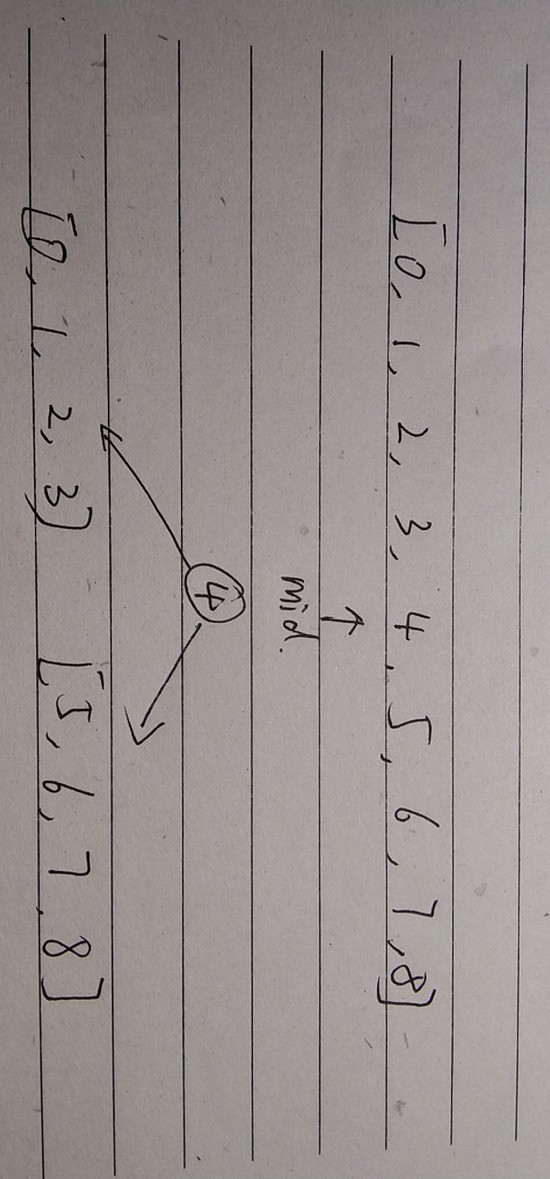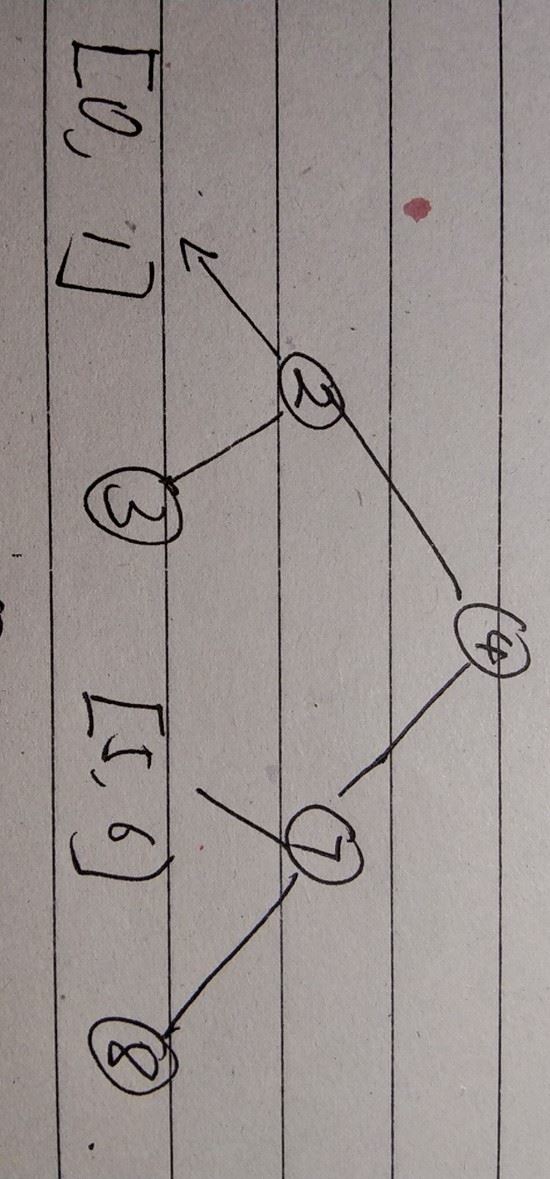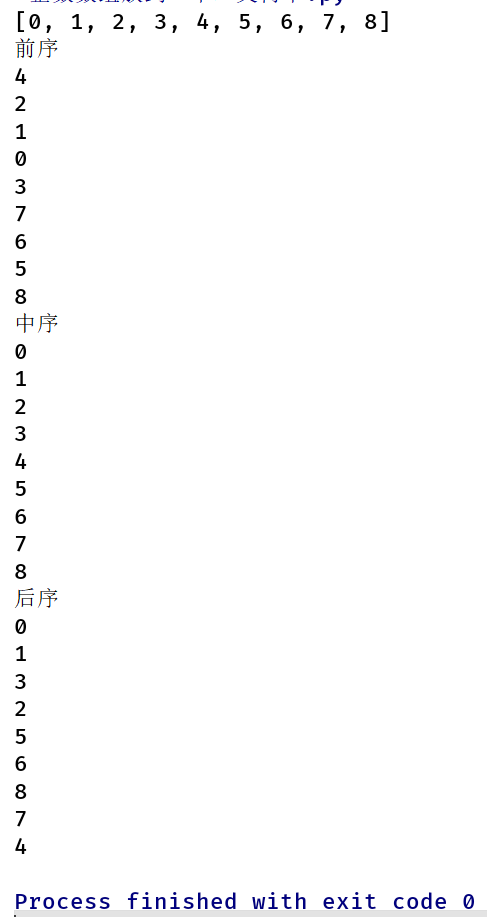您好,登錄后才能下訂單哦!
您好,登錄后才能下訂單哦!
這篇文章主要介紹了怎么在python中將有序數組轉換為二叉樹,此處通過實例代碼給大家介紹的非常詳細,對大家的學習或工作具有一定的參考價值,需要的朋友可以參考下:
Python主要應用于:1、Web開發;2、數據科學研究;3、網絡爬蟲;4、嵌入式應用開發;5、游戲開發;6、桌面應用開發。
題目:將[0,1,2,3,4,5,6,7,8,9,10]存儲到二叉樹,原數組有序,轉換為二叉排序樹。
二叉排序樹的特點:當前節點的左子樹上的所有節點都小于該節點,右子樹上的所有節點都小于該節點。
二叉排序也稱為二叉查找樹。
我的實現思路:
取有序數組的中間節點作為根節點,將數組分為左右兩個部分,對左右兩個子數組做相同的操作,遞歸的實現。
圖示:

1

2

3
代碼實現:
def array_to_bitree(array): #判斷arr是否為空 if len(array)==0: return BiTNode(array[0]) mid=len(array)//2 # 有序數組的中間元素的下標 #print(mid) #start=0 # 數組第一個元素的下標 #end=-1 # 數組最后一個元素的下標 if len(array)>0: #將中間元素作為二叉樹的根 root=BiTNode(array[mid]) #如果左邊的元素個數不為零,則遞歸調用函數,生成左子樹 if len(array[:mid])>0: root.left_child = arrayToBiTree(array[:mid]) #如果右邊的元素個數不為零,則遞歸調用函數,生成左子樹 if len(array[mid+1:])>0: root.right_child = arrayToBiTree(array[mid+1:]) return root
我們調用前面寫的三種遍歷方法看一看,我們構造的樹是否正確:
#將[0,1,2,3,4,5,6,7,8,9,10]存儲到二叉樹
if __name__ == '__main__':
#先構造一個有序數組、鏈表
arr=[]
for i in range(10):
arr.append(i)
print(arr)
#調用函數
BT=arrayToBiTree(arr)
#前序遍歷二叉樹
print("前序")
print_tree_pre_order(BT)
# 中序遍歷二叉樹
print("中序")
print_tree_mid_order(BT)
# 后序遍歷二叉樹
print("后序")
print_tree_after_order(BT)輸出:

根據這三種遍歷結果可以判斷出二叉樹的結構,結果和前面的是一樣的,代碼如下:
#定義二叉樹結點類型
class BiTNode:
"""docstring for BiTNode"""
def __init__(self,arg):
self.data = arg
self.left_child = None
self.right_child = None
#前序遍歷
def print_tree_pre_order(root):
#先判斷二叉樹是否為空
#if root.left_child is None and root.right_child is None:
if root is None:
return root
#先根
print(root.data)
#再左
if root.left_child is not None:
print_tree_pre_order(root.left_child)
#再右
if root.right_child is not None:
print_tree_pre_order(root.right_child)
#中序遍歷二叉樹
def print_tree_mid_order(root):
#先判斷二叉樹是否為空,當左右節點都為空時
if root is None:
return
#中序遍歷 左根右
#遍歷左子樹
if root.left_child is not None:
print_tree_mid_order(root.left_child)
#遍歷根節點
print(root.data)
#遍歷右子樹
if root.right_child is not None:
print_tree_mid_order(root.right_child)
#后序遍歷
def print_tree_after_order(root):
#先判斷二叉樹是否為空
if root is None:
return root
#再左
if root.left_child is not None:
print_tree_after_order(root.left_child)
#再右
if root.right_child is not None:
print_tree_after_order(root.right_child)
#先根
print(root.data)
def array_to_bitree(array):
#判斷arr是否為空
if len(array)==0:
return BiTNode(array[0])
mid=len(array)//2 # 有序數組的中間元素的下標
#print(mid)
#start=0 # 數組第一個元素的下標
#end=-1 # 數組最后一個元素的下標
if len(array)>0:
#將中間元素作為二叉樹的根
root=BiTNode(array[mid])
#如果左邊的元素個數不為零,則遞歸調用函數,生成左子樹
if len(array[:mid])>0:
root.left_child = array_to_bitree(array[:mid])
#如果右邊的元素個數不為零,則遞歸調用函數,生成左子樹
if len(array[mid+1:])>0:
root.right_child = array_to_bitree(array[mid+1:])
return root
#將[0,1,2,3,4,5,6,7,8,9,10]存儲到二叉樹
if __name__ == '__main__':
#先構造一個有序數組、鏈表
arr=[]
for i in range(9):
arr.append(i)
print(arr)
#調用函數
BT=array_to_bitree(arr)
#前序遍歷二叉樹
print("前序")
print_tree_pre_order(BT)
# 中序遍歷二叉樹
print("中序")
print_tree_mid_order(BT)
# 后序遍歷二叉樹
print("后序")
print_tree_after_order(BT)到此這篇關于怎么在python中將有序數組轉換為二叉樹的文章就介紹到這了,更多相關怎么在python中將有序數組轉換為二叉樹的內容請搜索億速云以前的文章或繼續瀏覽下面的相關文章希望大家以后多多支持億速云!
免責聲明:本站發布的內容(圖片、視頻和文字)以原創、轉載和分享為主,文章觀點不代表本網站立場,如果涉及侵權請聯系站長郵箱:is@yisu.com進行舉報,并提供相關證據,一經查實,將立刻刪除涉嫌侵權內容。